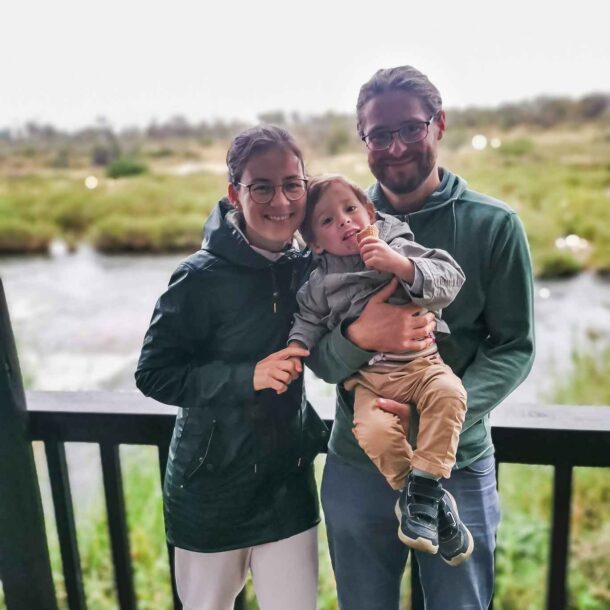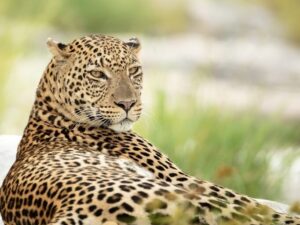
-
Buffel street 4457/4610
Marloth Park 1321
Mpumalanga
South Africa
Tel.: +27 (0)711961679
[email protected]

Part III: Improve photos?
Every now and then you meet people who say with a certain pride that they never edit pictures or even accuse editors of falsifying something. While disinterest, laziness, a lack of knowledge or ability can certainly be accepted as reasons not to undertake any processing, the allegations of falsification and the perfect image straight from the camera are nonsense and are based on a fundamental misunderstanding of the digital image. It all goes back to slide photography. In fact, at that time it was imperative to perfectly consider all aspects of the photo before pressing the shutter button. In addition to the correctly set exposure from exposure time, sensitivity, aperture, also the image composition, the horizontal background, the size of the subject, the perfect moment, etc. In addition, the film had to be laboriously changed every 36 images. Then you got the finished result with a standard development in an external laboratory without the possibility to influence it. But even then almost everyone has experienced the lab adding scratches, color casts, or misdevelopings.
An image is still developed today, albeit digitally in the camera, without shipping it and without any external chemicals involved. The sensor does not take a finished picture that you can show unadulterated or unedited. If you were to make an unprocessed sensor image visible directly from the camera, there would usually only be a mosaic of 3 colors (red/blue/green) of different brightness. So that would be the real “unadulterated” and “unedited” photo. You could tell little about it. In a first step, the camera calculates an image based on company-internal specifications or selection buttons on the camera. This means that 99% of the editing is done in-camera without your control. Instead, programmers who don’t even know what you are photographing have defined an algorithm that you can’t influence. In addition, there are e.g. dust spots or sensor errors on the picture, which certainly have nothing to do with the reality of the subject. In order to be better involved in this process, you should first of all photograph exclusively in RAW format. The RAW format is an intermediate step in image development. Not all properties of the image are finally defined. The images usually look a bit dull, but can then be edited excellently.
What are the goals of image processing? The initially obvious answer of fidelity to what you have originally seen, can definitely not, otherwise you would have to take a sharp photo over the entire image of your whole view. In fact, an image catches our attention when it is unusual. In terms of the situation, the colors, the perspective, the dynamics, the sharpness, etc. Even a telephoto lens shows something that we can’t see at all, but only a part of it, with macro shots it’s even more dramatic. Colors are also perceived differently by everyone. Many already see a difference with their left and right eyes. Fast recordings result in images that show something that happened far too quickly for us. In all of these cases, the pictures show things of which we don’t even know what they look like beforehand. In order to actually develop an image that shows something interesting without distorting it, it is imperative that I do some image processing.
The RAW format allows me to fine-tune numerous image factors such as sharpness, colors, dynamics, brightness, contrast, etc. This is the only way I can either try to reproduce the situation as realistically as possible or set my own accents. The camera intern processing can do neither of it. It should be noted that this is only the image development. First of all, all this has nothing to do with Photoshop and similar programs, that actually replace pixels. However, the boundaries are fluid, since image development programs also allow basic image manipulation. This ranges from the necessary removal of sensor spots to color changes that are definitely no longer within a permissible image development of a true nature image. Apart from that, it is of course crucial whether I have a more natural or more artistic approach to my photos. Under no circumstances should this be left to the engineers of the camera manufacturers.
In summary, one can say that image processing in nature photography should take the following aspects into account:
1. Correction of falling horizons
2. Desired brightness and contrast
3. Elimination of sensor spots
4. Optimize colors and saturation
5. Optimize sharpness and noise
6. Crop (image detail)
For illustrations any other change, e.g. massive changes in color or the addition or removal of image components using Photoshop, is also permitted, as long as this is not done with the intention of deception, but is clearly recognizable as a work of art. For example, nobody would think of calling a black/white conversion a fake just because the colors are missing and this not natural.
Buffel street 4457/4610
Marloth Park 1321
Mpumalanga
South Africa
Tel.: +27 (0)711961679
[email protected]
Buffel street 4457/4610
Marloth Park 1321
Mpumalanga
South Africa
Tel.: +27 (0)711961679
Fax: +27 (0)711961679
[email protected]

| Cookie | Duration | Description |
|---|---|---|
| cookielawinfo-checkbox-analytics | 11 months | This cookie is set by GDPR Cookie Consent plugin. The cookie is used to store the user consent for the cookies in the category "Analytics". |
| cookielawinfo-checkbox-functional | 11 months | The cookie is set by GDPR cookie consent to record the user consent for the cookies in the category "Functional". |
| cookielawinfo-checkbox-necessary | 11 months | This cookie is set by GDPR Cookie Consent plugin. The cookies is used to store the user consent for the cookies in the category "Necessary". |
| cookielawinfo-checkbox-others | 11 months | This cookie is set by GDPR Cookie Consent plugin. The cookie is used to store the user consent for the cookies in the category "Other. |
| cookielawinfo-checkbox-performance | 11 months | This cookie is set by GDPR Cookie Consent plugin. The cookie is used to store the user consent for the cookies in the category "Performance". |
| viewed_cookie_policy | 11 months | The cookie is set by the GDPR Cookie Consent plugin and is used to store whether or not user has consented to the use of cookies. It does not store any personal data. |